|
|
|
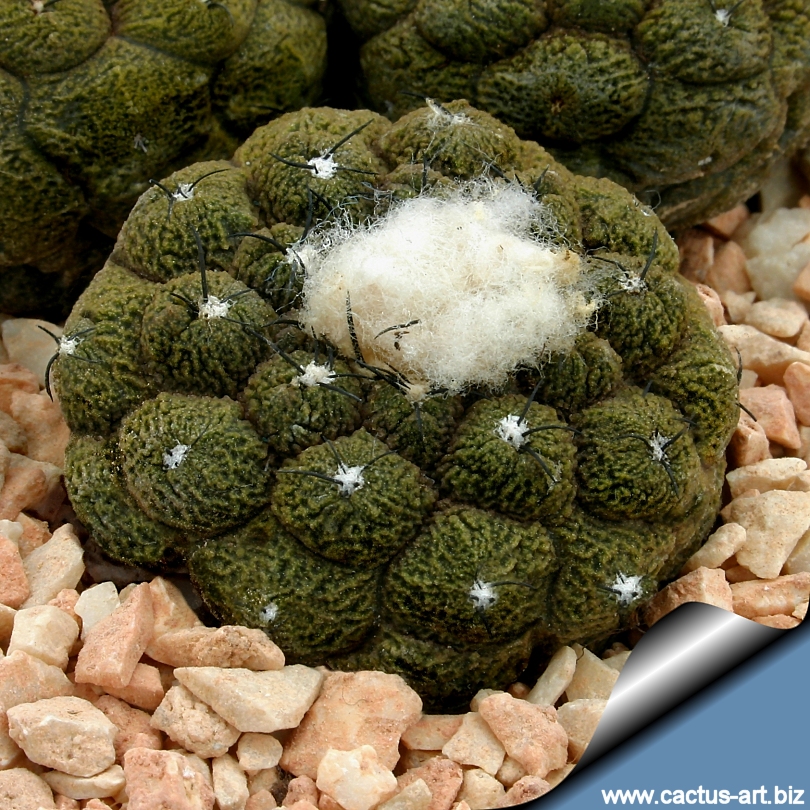
The distinctive
rugose stem of
“Lizard skin”
This uncommon and
rare form has a very peculiar epidermis of the colour
of a lizard!!!
|
|
Description:
Solitary or clumping slowly (occasionally
dichotomously branched) by offsets at the base.
Root: Tuberous-napiform, connected though a narrow region to the
main stem
Stem: Grey-brown or more commonly bronzed, depressed-globose, 3-4
cm in diameter (up to 7 cm in cultivation), the aerial part is almost
disc-shaped and almost sunken in the ground with white wool in the
centre, also in the older areoles. Epidermis smooth or roughened.
Ribs: 10-14(16) divided in extremely low often spiralled
tubercles up to 4-8 mm apart, about 4-7 mm in diameter and up to 5 mm
tall.
Areoles: Small 1-3 mm wide, sunken, oval, with white felt and
well separated.
Spines: Completely absent on older part of the plant.
Central spines: Absent or solitary and minute.
Radial spines: Very few (from 0 to 10) thin, short and less than
4 mm long. Brownish or black becoming ash grey and later deciduous.
Flowers: Diurnal, apical, with the typical Copiapoa scented,
yellow and pink broad 1,5-2 cm long and 30-40 mm wide.
Blooming season: Hotter days in summer, blooms open about to
hours after sunrise and close two hours before sunset.
Fruit: Slightly fleshy, small globular whitish with only few
minuscule apical scales.
Seed: Shining black an smooth, about 1 mm long, 0,75 mm large and
0,5 mm thick.
|
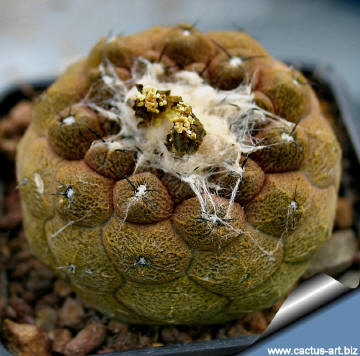 |
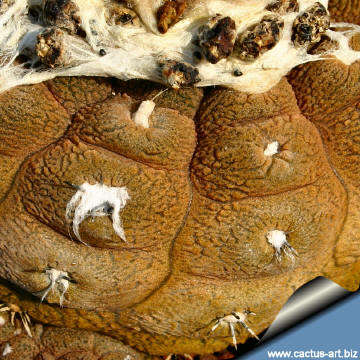 |
|
Photo of conspecific taxa,
varieties, forms and cultivars of
plants belonging to the Copiapoa hypogea
complex
(This
Taxon
has lots of synonyms
(
like many other cacti) whit several controversial varieties and subspecies
and comprises a multitude of different forms, but where each form
is linked to others by populations of plants with intermediate
characteristics):
|
|


Advertising
|
|
|
|
|
Family:
Cactaceae
(Cactus
Family)
Accepted
Scientific name:
Copiapoa
hypogaea
F. Ritter
In:
Cactus, Paris, xv. No. 66, 19 (1960)
Origin:
Two forms of C. hypogea are known from the neighbours of
Chañaral (Coastal Chile, 02 Antofagasta), the fist (rare) at north of
the town shows a rugose epidermid (the so called
“Lizard skin”),
the second near the town and in the south area with smooth epidermis
(also known as C. barquitensis) this second form is more
familiar in the collections.
Conservation status: Listed in
CITES appendix 2.
Synonyms:
- Copiapoa barquitensis
- Copiapoa hypogaea var.
barquitensisB
Etymology:
The name
'hypogaea' comes from the Greek for 'underground',
referring to the fact that most of the cactus head is usually sunken
into the ground.
|
|
|
|
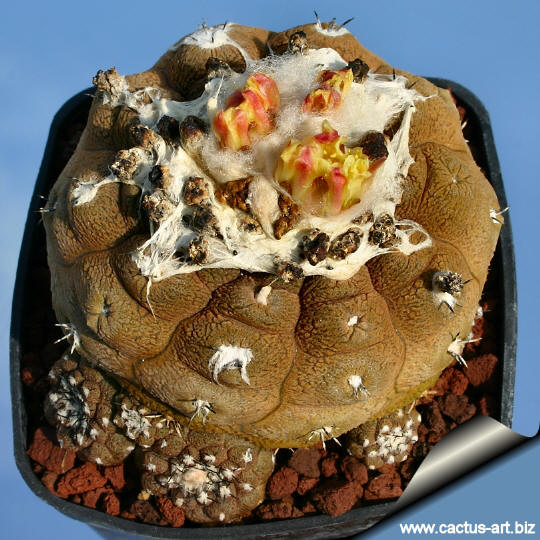
Bronze tones in full sun.
|
|
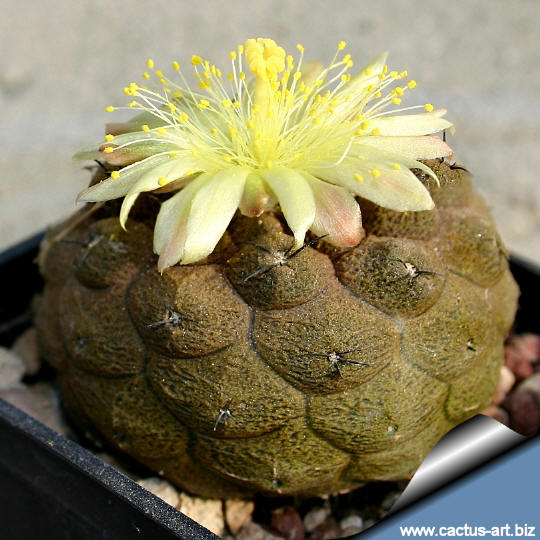
Flower
Cultivation: This slow growing cactus is kept for the beauty of
its form. It must be protected from excessive heat and sun in summer,
and seems to do best in cultivation with a bit of shade. It requires
light but regular waterings in summer, but let the soil mix dry between
waterings, Prone to rot if over-watered. Needs good drainage. Keep
warm and dry in winter (10°C) to avoid rot. Not highly tolerant of a
great deal of frost. (Frost tolerance 0°C)
Propagation: Seeds (or offsets if available), Grafting is often used
to speed growth rate and to create a back-up to plants in collection. |
|